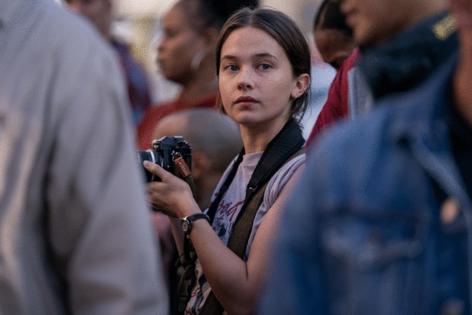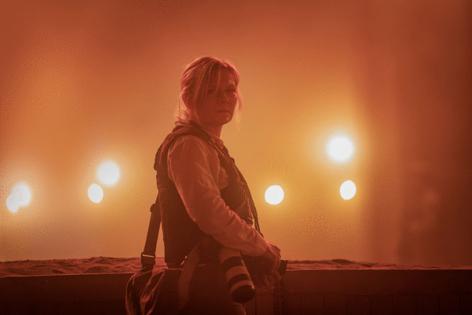What 'Civil War' gets right and wrong about photojournalism, according to a Pulitzer Prize winner
Published in Entertainment News
LOS ANGELES — After favorable reviews and a strong opening weekend at the box office, Alex Garland’s provocative “Civil War” is already poised to become one of the most talked-about movies of the year. The filmmaker’s graphic, often terrifying depiction of a war-torn America and a government in crisis has sparked plenty of debate among audiences and critics.
And while the story’s “what-if” premise is pure fiction, “Civil War” is nonetheless flavored by a gritty realism central to its power.
The principal focus of “Civil War” is war-weary photographer Lee (Kirsten Dunst) and her writer colleague Joel (Wagner Moura), who pick up an aspiring young photographer named Jessie (Cailee Spaeny) and a veteran journalist named Sammy (Stephen McKinley Henderson) as they set off on a dangerous journey to the White House, where the president is besieged by encroaching rebel forces.
Carolyn Cole, who has covered national and international news for the L.A. Times since 1994, saw “Civil War” late last week and agreed to answer questions about what the film gets right — and wrong — in its depiction of journalists operating in perilous conditions. Cole’s work on the effects of civil war in Liberia won the 2004 Pulitzer Prize for feature photography. She is also two-time winner of the Robert Capa Gold Medal for war photography from the Overseas Press Club of America. The following has been lightly edited.
Q: Overall, how would you rate the accuracy of “Civil War,” speaking from the perspective of an experienced photojournalist?
A: As horrible as the premise of a current-day civil war may be, I thought many of the themes touched on in the movie were realistic, like the interplay between a veteran and novice photographer, and the group of journalists as they traveled together. Although the scenarios they faced were extreme, they were plausible. Real images come to mind like that of the American soldiers hung from a bridge in Fallujah, Iraq, or the U.S. Marine dragged through the streets of Mogadishu, Somalia. I’ve photographed riots, firefights, mass graves and the aftermath of deadly bombings. Like all movies, the intensity of each scene is exaggerated, but the scenarios are possible.
Q: Were there any moments in the film that you thought clearly misrepresented the experience of photojournalists working in a conflict? How so?
A: I thought Dunst did a good job playing a veteran photojournalist, especially in her calm demeanor throughout most of the movie. However, there were several scenes where she was carrying a camera bag but didn’t have her camera out. Sometimes she was using a short lens when she should have been using a telephoto lens and vice versa. There were also times when major events were happening and she wasn’t taking any pictures. Toward the end of the film, she stops working completely, as PTSD takes over. But compared to many movies I’ve seen that portrayed photographers as paparazzi with a flash attached to the top of the camera, I thought the overall portrayal of the photographers was well done.
There is one scene where Jessie is developing her film in the field. Although some photographers still use film, you need a darkroom to load the film into the developing cans. In the old days, I used to take all the chemicals with me on assignments and develop the film in a bathroom, then dry it with a hairdryer.
The final scenes are clearly over the top, but Lee stepping out into the line of fire to protect Jessie seemed more like a motherly instinct than one of a colleague. By that point, the handing off of the baton to Jessie is in full swing. The physical and psychological effects of working as a conflict photographer, along with the toll it takes on one’s personal life, do pile up over time.
...continued
©2024 Los Angeles Times. Visit at latimes.com. Distributed by Tribune Content Agency, LLC.










Comments